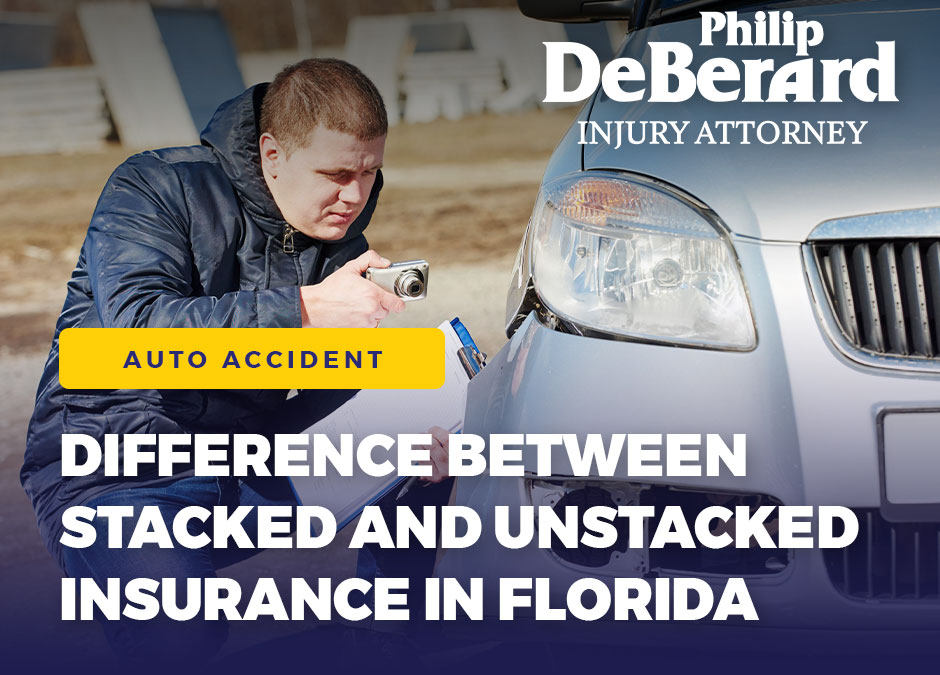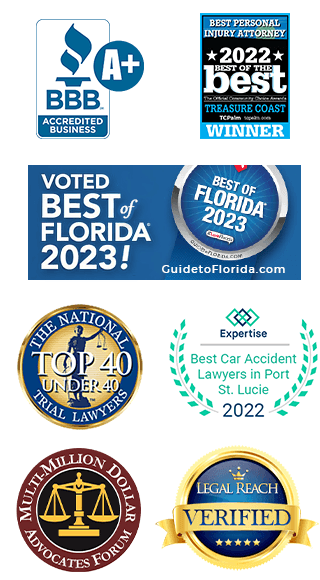Car accidents often result in astounding costs, especially if you’re injured. Stacking your insurance coverage can help you manage the financial burdens that follow a serious car crash, and can protect your loved ones, too. Here’s how stacking insurance works in Florida.
Sidenote: You may find the following articles to be helpful: Why Uninsured Motorist Coverage is Essential for Floridians and How A Costco Slip and Fall Accident Lawyer in Florida Can Help Get You The Compensation You Need.
What is stacked coverage in Florida?
Stacked insurance coverage in Florida means combining the uninsured/underinsured coverage limits for various vehicles you own. This increases your available compensation in the event of an accident.
Florida allows stacking only for uninsured/underinsured motorist coverage, commonly known as UM/UIM. This is an optional coverage when you purchase your auto insurance. It covers your expenses if:
- your accident injuries cost more than your Personal Injury Protection coverage, AND
- those injuries were caused by a driver who has insufficient or no liability insurance to pay you.
Again, UM/UIM is optional in Florida, but numerous drivers purchase it as an important layer of protection in case of an injurious accident. When you do opt for UM/UIM, consider how you may stack the coverages for your multiple vehicles.
What are examples of stacked insurance?
To better illustrate stacked coverage, here are some examples.
Example 1: Stacking insurance limits within one policy
Let’s say you have one UM policy covering two cars. This policy’s limits for each car are $50,000 per person with a maximum of $150,000 per accident. When you stack these limits, you’ll get an increased available coverage of $100,000 per person with a maximum of $300,000 per accident.
Example 2: Stacking insurance limits across multiple policies
Suppose you have a UM policy for your truck, covering $200,000 per person and a maximum of $300,000 per accident. Your spouse also bought a UM policy for her car, covering $100,000 per person and a maximum of $300,000 per accident. Stacking these limits will give you an increased available coverage of up to $500,000 per person and $600,000 per accident.
There are many other stacking strategies you can come up with if you have multiple vehicles with UM/UIM. You may even stack limits for various types of motor vehicles such as cars, trucks, and motorcycles, as long as those vehicles have UM/UIM coverage.
What is the difference between stacked and unstacked insurance in Florida?
The difference is that stacked insurance raises the limit for how much compensation you may get, while non-stacked insurance confines you to the original limit stated in your UM/UIM policy. In other words, you may get a greater payment if you stack your insurance.
Do I need stacked insurance in Florida?
No, the law does not require you to get stacked insurance in Florida, but stacking has proven crucial in many accident cases.
Serious crash injuries often exceed the limits of Personal Injury Protection insurance. If the at-fault driver can’t pay for the extra costs, the victim will have to rely on their own UM/UIM coverage. Stacking UM limits gives the injured person a better chance of getting full compensation.
Is stacked insurance worth it in Florida?
For many Florida motorists and households, stacked insurance is worth it. The main reason is that our state is rife with uninsured drivers, and any one of them could cause a serious accident they can’t pay for.
In fact, Florida ranks sixth in the nation in terms of uninsured motorists, with an uninsured driver rate of 20.4 percent in 2023, according to a nationwide survey. That’s roughly 3.7 million uninsured drivers with whom we share the road.
Imagine if one of them causes catastrophic injuries costing tens or hundreds of thousands of dollars. Personal Injury Protection in Florida covers only 80 percent of medical bills, with a maximum limit of $10,000. The injured victim could be left with significant remaining expenses.
In the event you get in a major collision with an uninsured driver – or if you get seriously injured in a hit-and-run – it’s vital to have increased insurance protection to cover the mountain of expenses that ensues.
How do I stack insurance in Florida?
Stacked insurance is optional in Florida. When you buy UM/UIM coverage, state law assumes that you want stacked limits by default. However, as you fill out the state-approved form, you have the option to waive the stacking.
Maximizing Your Accident Compensation: Contact Us
If you hope to maximize your compensation after a vehicle accident in Florida, consult with us at Philip DeBerard, Injury Attorney. Your consultation is free, and you’ll get legal guidance from a top-rated injury lawyer. Call today at 1-800-299-8878.





